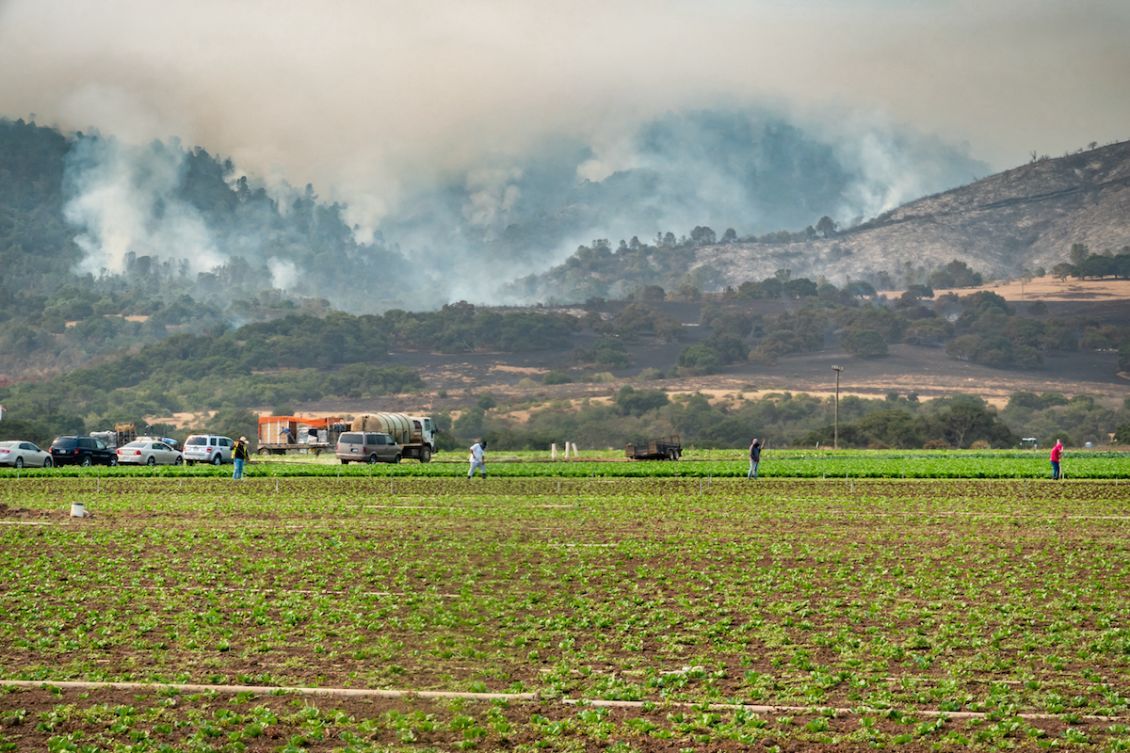Climate-related disasters are on the rise across the United States, yet California’s Central Valley is often overlooked despite its urgent need for resources and support. Climate change is not just an environmental issue in this area — it's an economic and social one that disproportionately impacts vulnerable populations with the fewest resources to adapt or recover.
This fall, Enterprise’s Sustainable Connected Communities (SCC) team participated in the 13th Annual San Joaquin Valley Affordable Housing Summit, where they presented climate resilience strategies for affordable housing during a panel workshop titled “The New Normal: The Impact of Climate Change on Extreme and Other Natural Disasters.”
Hosted by the San Joaquin Valley Housing Collaborative, this important regional convening gathers diverse stakeholders, including housing and service providers, philanthropic organizations, government agencies, and others committed to addressing the Central Valley’s housing needs and building capacity for affordable, healthy communities. A central theme of the summit was the intersection of climate and housing challenges in the region, emphasizing the resources necessary to help communities remain resilient in the face of these growing threats.
Unique Climate Challenges
The Central Valley — like other interior regions in the West — faces a unique range of climate hazards that sets it apart from coastal communities. While Bay Area and Southern California residents face wildfire and drought risks, the Central Valley is uniquely vulnerable to hazards such as extreme heat, drought, subsidence (sinking of land), flooding, and poor air quality from both wildfire smoke and pollution drifting inland from the coast.
With relentlessly hot summers and record-breaking heat waves, Central Valley residents face higher energy costs, significant health risks related to extreme heat, and an increasing need for air-conditioning. Farmworkers who labor outdoors in these extreme temperatures face some of the highest risks of heat-related illness and death, a growing issue as temperatures continue to climb. At the same time, agricultural cities in the area face increased flood risk, with state and local officials in cities such as Stockton prioritizing drought prevention measures rather than flood mitigation strategies.
The Cost of Resilience and Recovery
In recent decades, the financial costs, severity, and frequency of extreme weather events have surged both globally and in the Central Valley. In 2022, Central Valley legislators requested $20 million in flood recovery funds for Planada, a predominantly Latino community in Merced County. Many Planada residents, who work in agriculture, experienced job instability and unsafe housing conditions, including mold infestations, following the floods.
Disadvantaged communities often face greater impacts by climate disasters and lack the resources needed for recovery because federal relief funds frequently fall short of fully addressing residents’ needs. Unfortunately, communities like Planada are more likely to be overlooked in funding decisions since they lack the political influence needed to secure adequate recovery support.
These vulnerabilities are further exacerbated by the affordable housing challenges of the Central Valley, where environmental and health risks hit low-income and communities of color the hardest. Research has shown that older, low-income, and minority populations are most affected by climate impacts such as rising temperatures and poor air quality.
In rural areas of the Central Valley, these populations face worsening housing and infrastructure conditions that make adapting to climate threats even more difficult. Historical policies like redlining and the scarcity of green spaces have only worsened these conditions, pushing climate and housing resources toward wealthier, predominantly white areas. This leaves many disadvantaged communities in buildings not built for the changing climate.
Resources for Central Valley’s Needs
During the San Joaquin Valley Affordable Housing Summit, the SCC team highlighted several Enterprise resources designed to address the Central Valley’s unique climate resilience and affordable housing needs.
Among the key tools shared with summit participants was the Enterprise Green Communities program, which is the only green building certification program created with and for the affordable housing sector. Enterprise Green Communities provides grants and technical assistance to advance high-quality, affordable housing developments and support developers as they better prepare their buildings to withstand local climate hazards.
The team also shared resources from Enterprise’s regional Climate Resilience Academies, including the Enterprise Portfolio Protect Tool and Ready to Respond: Business Continuity Toolkit. The Portfolio Protect Tool enables affordable housing owners and operators to assess their portfolios' exposure to various climate hazards, providing on-demand recommendations and resources to minimize risk. Complementing this, the Ready to Respond toolkit equips affordable housing providers with business continuity plans to ensure resident safety during emergencies.
Additionally, Enterprise has provided deep technical assistance to communities across the region seeking funding from California’s Affordable Housing and Sustainable Communities (AHSC) program. Program funds support sustainable land-use patterns by investing deeply in affordable housing and sustainable transportation projects that improve community connectivity. Since 2016, Enterprise has helped Central Valley communities access over $160 million in AHSC program funds to create more than 800 affordable homes. Together, these tools are designed to enhance the resilience of affordable housing providers and their communities.
Looking ahead, it is crucial that we advocate for equitable funding distribution for climate resilience and ensure that the Central Valley receives the resources it needs. We must also take care to build deep and lasting partnerships with organizations on the ground who are leading climate resilience and disaster recovery efforts in this region.
To help Central Valley communities thrive, Enterprise and our partners are committed to tracking the progress of resilience initiatives, improving and streamlining strategies, expanding technical assistance offerings, and developing solutions that meet the region’s unique needs.
